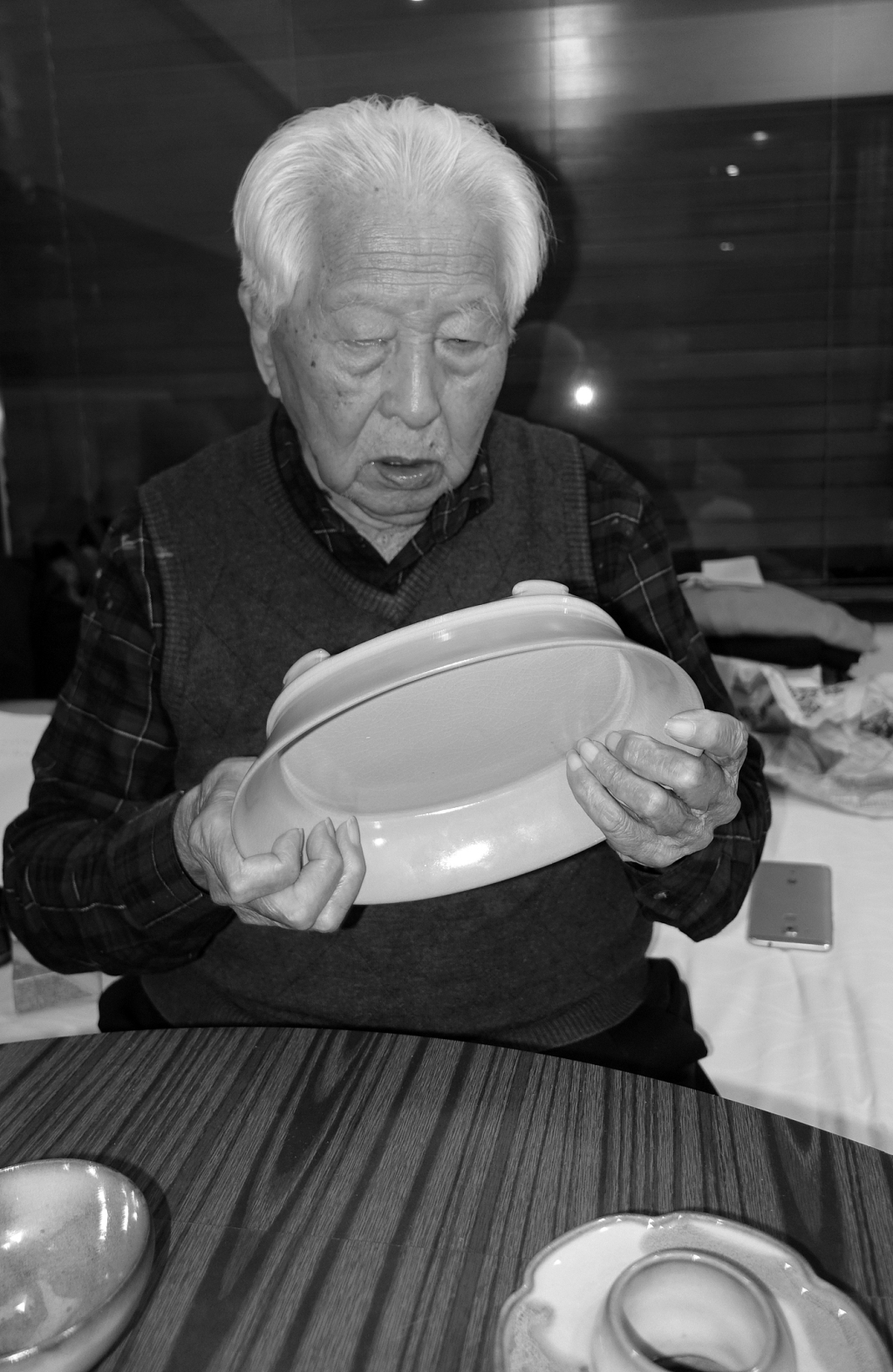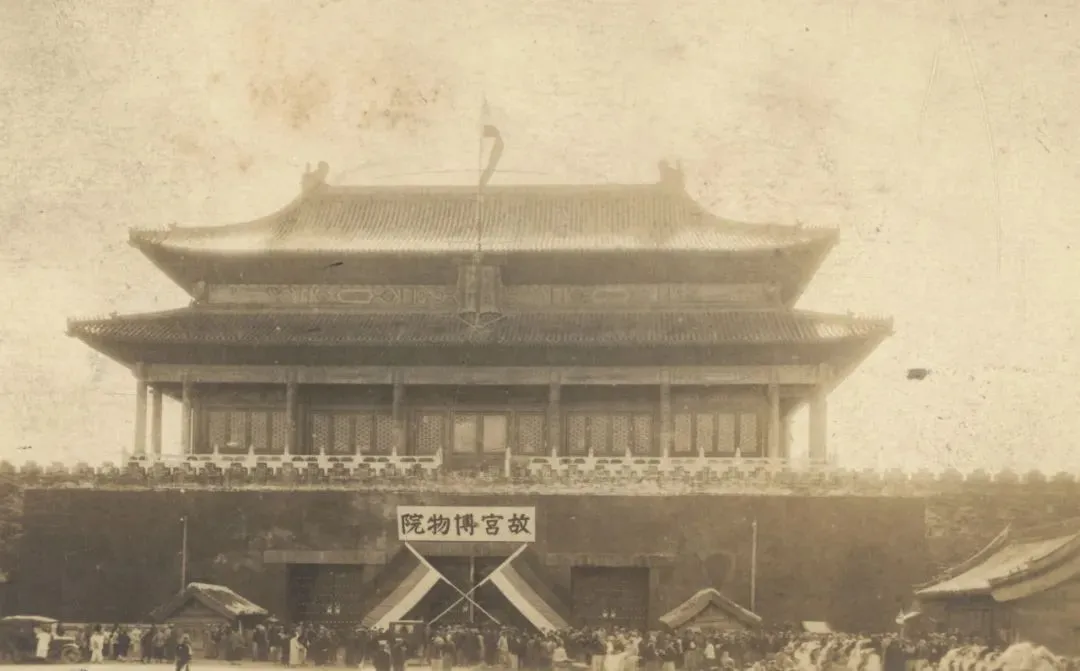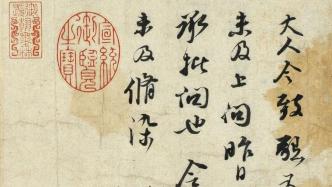
Most of the famous Chinese papers of past dynasties, such as Shan rattan paper, Shanzhong bamboo paper, mulberry root paper, cocoon paper (creamy paper), Xuetao paper, Chengxintang paper, etc., have mostly been lost. In order to solve the problems of traditional paper restoration and contemporary application, earlier this year, the national key R & D program "Cultural Technology and Modern Service Industry" special project "Chinese Traditional Painting and Calligraphy Special Paper Technology Improvement Key Technology Research and Development" was held at the China Academy of Art. And the implementation plan consultation meeting, this national key special project that took the lead in systematically sorting out the problems of traditional calligraphy and painting special paper crafts in China has officially "started". What has attracted quite a lot of attention is that the project team, together with the inheritors of intangible cultural heritage, restored the Chengxintang paper, a famous paper from the Song Dynasty, through research and development.
Recently, The Paper had a dialogue with Zhang Qing, the general director of this project and deputy director of the National Art Museum of China, and asked him to explain in detail some problems of traditional paper restoration and contemporary application. "This is an application-oriented improvement project for traditional calligraphy and painting paper technology. The application of contemporary art creation and the restoration of ancient calligraphy and painting are like wings. Only by spreading our wings can we see the importance and urgency of our project application field. " Zhang Qing said.
Zhang Qing, a professor at the China Academy of Art and deputy director of the National Art Museum of China, is the general director of the project "Key Technology Research and Development for the Improvement of Special Paper Crafts for Traditional Chinese Painting and Calligraphy". From 1999 to 2011, Zhang Qing served as the deputy director of the Shanghai Art Museum and the director of the Office of the Shanghai Biennale Organizing Committee, responsible for organizing and planning the "Shanghai Biennale". "My work has always been related to art and technology. The two have been integrated in me for more than 20 years. All this has made me have endless thoughts on the role of technology in art." Zhang Qing said.
Regarding the ongoing project of "Key Technology Research and Development of Chinese Traditional Painting and Calligraphy Special Paper Technology Improvement", Zhang Qing summarized the project goals in three sentences: first, to form a new pulping technology for Chinese traditional calligraphy and painting special paper; second, to prepare high-strength, High-performance special paper products for traditional calligraphy and painting; the third is to improve the application level of traditional calligraphy and painting paper in contemporary art creation and ancient Chinese painting and calligraphy mounting and restoration.
Recently, the project team and the inheritors of intangible cultural heritage have become the focus of everyone's attention to develop and restore Chengxintang paper through the analysis of the materials, technology, paper characteristics research, and restoration technology inheritance of the famous Song Dynasty paper Chengxintang paper. .
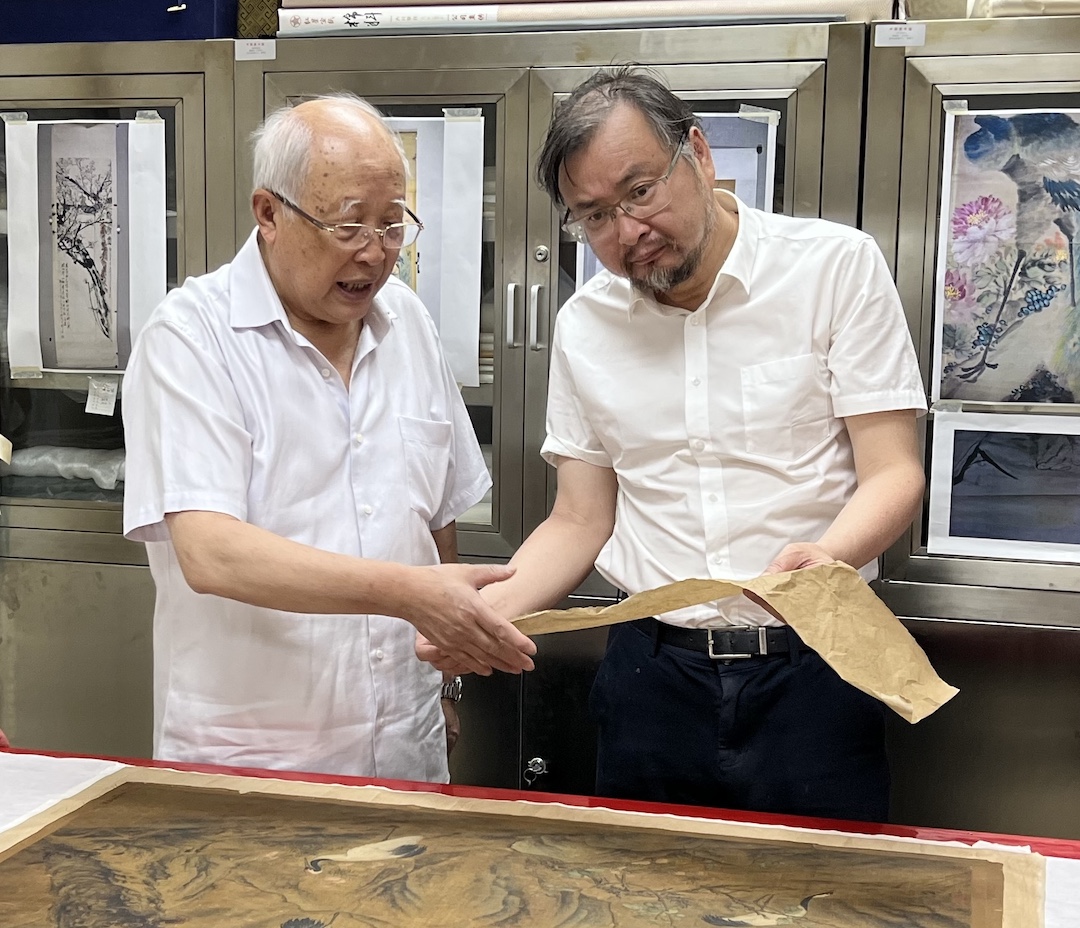
Xu Jianhua and Zhang Qing, restorers of ancient calligraphy and painting at the Palace Museum, are discussing the structure and composition of ancient calligraphy and painting paper
The Paper: Famous Chinese papers of past dynasties, such as Shanteng paper, Shanzhong bamboo paper, side-leaf paper (or moss paper), mulberry root paper, cocoon paper (creamy paper), hard yellow paper (Jinsushan paper), Xuetao paper , Chengxintang paper and so on have been lost. Can the restoration with innovative paper replace the current restoration methods? How to distinguish between them and which one is better?
Zhang Qing: Famous papers from past dynasties in China, such as Shan rattan paper, Shanzhong bamboo paper, side-leaf paper (or moss paper), mulberry root paper, cocoon paper (creamy paper), hard yellow paper, Jinsushan paper, Xue Tao paper , Chengxintang paper, etc., its production technology is indeed gradually lost in the historical evolution. For the restoration of these traditional famous papers as the carrier of ancient books and paintings, innovative paper, or recovery paper, can be considered as a substitute. However, the advantages or disadvantages between innovative paper and traditional famous paper depend on several factors, including restoration goals, paper characteristics and restoration methods, etc.
The characteristic of traditional famous paper is that after long-term development and practice, they have unique characteristics in paper texture, ink absorption, stability, etc., and can better match ancient works. However, authentic traditional famous papers are hard to come by due to lost craftsmanship, in which case restoration using innovative papers is a viable alternative.
Innovative paper is a type of paper created through modern technology and material research and development. While they can address restoration needs by simulating the characteristics of traditional papers, innovative papers have the advantage that they can be tailored to meet specific restoration goals.
In order to meet the needs of artistic expression, the famous paper used in ancient calligraphy and painting is mostly processed paper, including dyeing, filling, coating, etc. The Song Dynasty was the peak of ancient papermaking, and a large number of processed papers appeared in the paper for calligraphy and painting. In order to meet the supplementary needs of such traditional calligraphy and painting painting heart paper, taking the common Song Dynasty Buddhist scripture paper as an example, various detection and analysis technologies were used to detect and analyze the relevant components, structure, and process, and to study the processing technology and restore the copy.

Liang Kai of the Southern Song Dynasty "Li Bai Yin Xing Tu Axis"
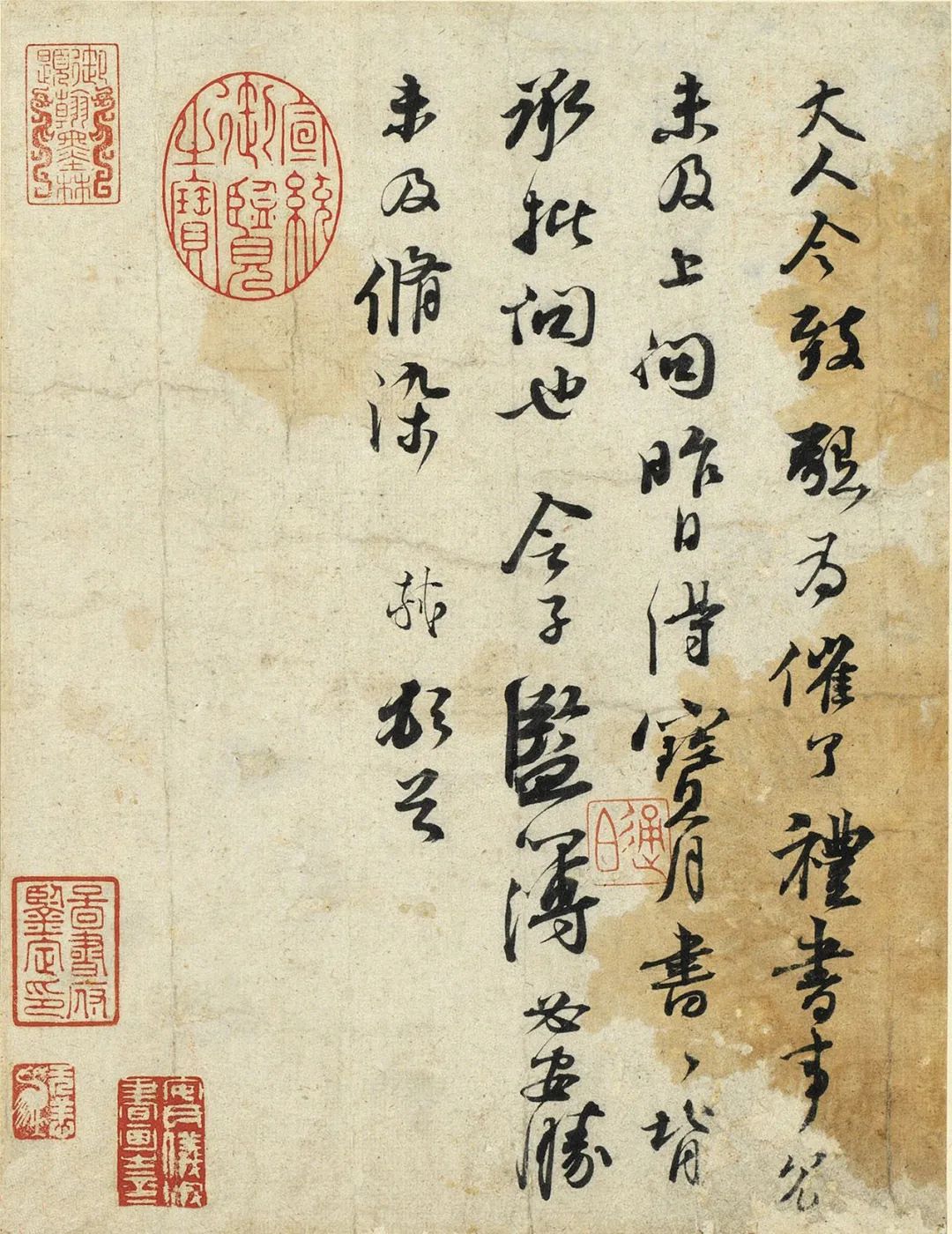
Song Dynasty Su Shi's "Baoyue Tie" Running Script
We can see that there is a five-character poem plaque of "Zhongzheng Renhe" written by Emperor Qianlong in the Ming room of Xinuang Pavilion in the Hall of Mental Cultivation of the Palace Museum. A total of 15 pieces of small-sized scripture paper are put together, and each piece of scripture paper is folded and refitted, leaving traces of folding on the paper. Through multi-spectral technology, under 950nm infrared light, the scriptures behind the modified cultural relics can be clearly seen. Through the analysis and combing of the scriptures, the scriptures are all derived from the "Avatamsaka Sutra".
In the restoration of ancient Chinese calligraphy and painting relics, it is necessary to find paper that is as similar as possible to the original painting heart paper in fiber species, physical and chemical parameters when supplementing the painting heart paper. If the heart-painting paper is processed paper, it is necessary to analyze its composition and structure, and customize the repair paper according to the original process. Based on scientific and technological analysis and testing data, this project aims to develop restoration paper according to the processing technology of heart-painting paper for cultural relics to be repaired and supplemented with innovatively processed paper-painting paper.
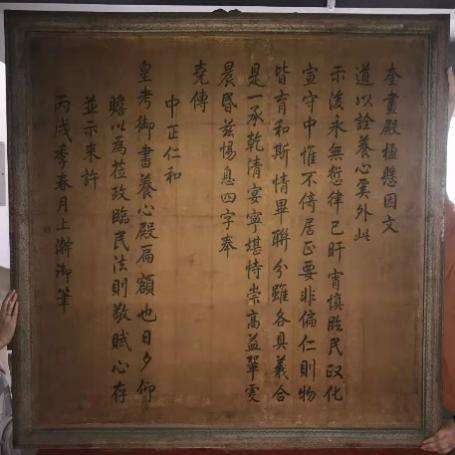
The five-character poem plaque of "Zhongzheng Renhe" written by Emperor Qianlong under visible light

The five-character poem plaque of "Zhongzheng Renhe" written by Emperor Qianlong's imperial pen can be clearly seen under 950nm infrared light.
There may be some differences between innovative paper and traditional famous paper. First of all, aspects such as paper texture and gloss may be slightly different from traditional famous paper, because the production process and raw materials may be different. Second, the stability and durability of innovative paper may need to be tested and verified over a long period of time to ensure that restoration works can be preserved for a long time. There are several factors that need to be considered comprehensively when distinguishing which is better. If there is an opportunity to use traditional famous paper for restoration, and its quality and stability can be ensured, then traditional famous paper may have more historical and cultural value in protecting cultural relics and artworks. However, if traditional famous papers are not available or their quality cannot be guaranteed, innovative papers can serve as a viable alternative for restoration needs. The final selection depends on the goals of the restoration, the materials available, and the evaluation of the restoration specialist.
The Paper: Zhou Jiazhou's "Decoration Records" in the Ming Dynasty involved the theory and practice of calligraphy and painting restoration, and established the principles and methods of restoration for future generations. In the past, people called calligraphy and painting mounters "painting doctor", just like a doctor cures all diseases for people, and a painting doctor cures all diseases for calligraphy and painting. The traditional restoration technology believes that the depth of the panchromatic color, the amount of glue added, and the concentration of the paste are all different for each painting. They cannot and cannot be digitized and standardized, and all depend on clinical experience. What do you think?
Zhang Qing: Traditional restoration techniques emphasize the uniqueness of individual cases and individualized treatment methods. According to different repair objects and specific conditions, the restorer needs to decide which color, depth, amount of glue and paste concentration to use based on his own experience and professional judgment. This empirical approach ensures a certain degree of personalization and adaptability of the restorative effect. However, traditional restoration techniques also present some challenges. First of all, due to the differences in the experience of each restorer and the restoration environment, there may be some subjectivity and uncertainty in the restoration results. In addition, the case processing and experience accumulation of traditional restoration methods are difficult to digitize and standardize, thus affecting the inheritance of excellent traditional skills and limiting their application in large-scale and high-efficiency restoration.

Zhang Qing, "City of Soul", mixed media on special processed paper, 300x197cm, 2019
Since 1953, through the practice and experience summary of several generations of restorers in the Palace Museum, combined with modern scientific and technological analysis methods in recent years, it has also formed its unique concept and technical system. For example, the "minimum intervention principle" should be defined in combination with the cultural history and artistic aesthetics of traditional Chinese calligraphy and painting in panchromatic and brushwork. The "full color" in the traditional Chinese restoration concept is to "full" the color of the newly repaired part of the incomplete part of the old calligraphy and painting to be in harmony with the style of the original, so that the whole picture appears complete. "Continuing the pen" is to fill in the missing parts of the original painting, so that the picture is as complete as possible. For the missing part of the calligraphy and painting cultural relics, it is best to carry out the restoration of the painting in time, so as to preserve the original painting to the greatest extent and make it complete.
In the current restoration of calligraphy and painting, while inheriting the traditional skills, the full-color painting work also uses scientific analysis methods to select the same pigments, dyes, and inks as the cultural relics for coloring, and to test the pens on the supplementary materials. Carry out full-color painting on the basis of a comprehensive grasp of the material properties. At the same time, with the help of multi-spectral and ultraviolet fluorescence technology, it is still possible to clearly judge the area of the pen and full color, so as to distinguish between the repaired area and the original painting area, which is in line with the "principle of recognizability".
With the development of modern technology, digital and standardized repair methods have gradually gained attention. For example, the introduction of digital imaging technology, image analysis algorithms, and scientific testing methods has enabled the restoration process to be evaluated and operated more objectively and accurately. Such technical means can provide more objective indicators and data support, help to formulate restoration standards and procedures, and improve the replicability and manageability of restoration. Therefore, integrating the advantages of traditional restoration techniques and modern scientific and technological means can promote the progress in the field of painting and calligraphy restoration. Traditional empirical methods still have their value, but combining scientific research and technical support can better protect and restore cultural relics so that they can be preserved and passed on for a long time.
The Paper: The project being implemented is an application demand-oriented traditional calligraphy and painting paper craft improvement project. The application fields are contemporary art creation and ancient calligraphy and painting restoration. Please introduce them separately.
Zhang Qing: This is indeed an application-oriented improvement project for traditional calligraphy and painting paper technology. The application of contemporary art creation and the restoration of ancient calligraphy and painting are like two wings. Only by spreading our wings can we see the importance and importance of our project application field. Urgency.

Zhang Qing and Chen Yuping, quality director of China Xuan Paper Co., Ltd., researched papermaking raw materials and pulp formula
In the creation of Chinese contemporary art, the limitation of material hinders the effect of artistic expression and visual communication. For art works, I actively search for paper, hoping to produce a paper with better expressive force. Therefore, I have searched all over the country for various calligraphy and painting papers, handmade papers produced by ethnic minorities in Anhui, Zhejiang, Yunnan, Guizhou, Sichuan, Xinjiang, Tibet and other regions, and even papers made by folk old people in deep mountains and old forests. Ask for handmade paper crafts and materials. But even if this kind of paper can be found sometimes, the quality of the paper is not stable, and the quality and size of the same batch of paper are also different. It can be said that how to seek stable quality paper has always puzzled contemporary artists. At present, with the project team jointly developing innovative contemporary art special paper, the power is strong. The purpose is to meet the needs of contemporary artists for various effect papers, such as texture, color, quality, etc., and improve the durability of paper. and stability to ensure long-term preservation of contemporary artworks.

Zhang Qing, "Out of Control No.3", mixed media on handmade leather paper, 170x390cm, 2021
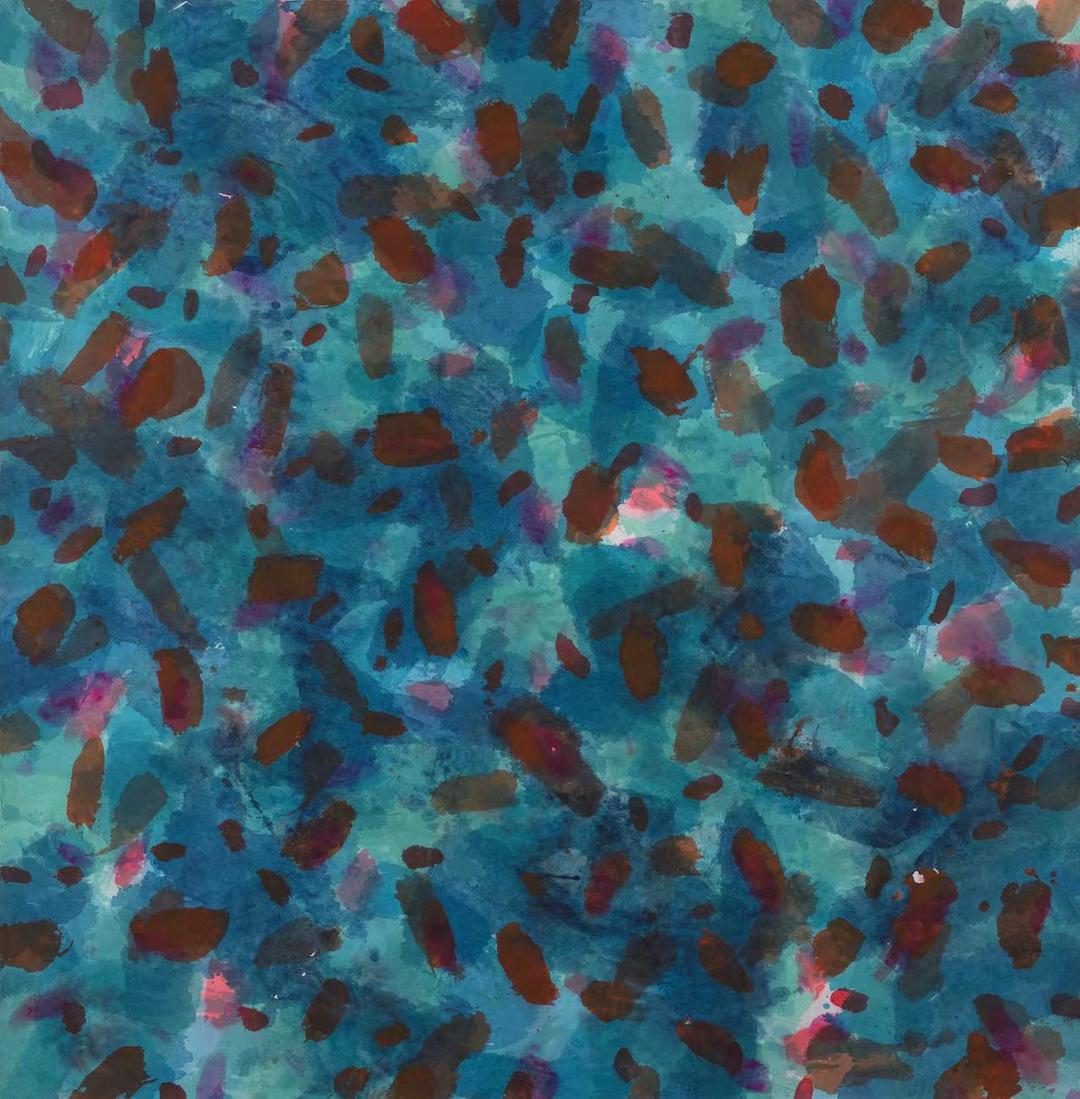
Zhang Qing, "World No.31", mixed media on handmade leather paper, 190x190cm, 2021
At present, our team further researches and analyzes the needs and opinions of contemporary artists on paper, and understands their requirements for the performance of paper materials.
At the same time, further explore new paper material formulations to improve the texture, color, ink splashing and quality of traditional paper.
In addition, the team is still improving the process and manufacturing new equipment to further improve production efficiency and ensure quality stability.
Aiming at the application scenarios of ancient calligraphy and painting restoration, firstly, sort out the development history of Chinese traditional calligraphy and painting mounting and restoration paper; according to the characteristics of different types of calligraphy and painting mounting paper and the demand and existing problems of restoration paper, put forward the development of traditional Chinese painting and calligraphy restoration paper. Relevant parameter standards; research and development of anti-mildew and insect-proof paste improvement materials suitable for painting and calligraphy mounting and restoration; research and development of calligraphy and painting mounting and restoration paper, which is applied to the mounting and restoration of traditional Chinese calligraphy and painting cultural relics represented by Song Dynasty calligraphy and painting; establish ancient Chinese calligraphy and painting. Paper effect evaluation method.
During the exhibition and collection of ancient Chinese calligraphy and painting, due to the influence of natural environment and human factors, there are often phenomena such as partial cracking or breaking of the center of the painting. For this kind of disease, it is usually repaired by sticking folded strips on the corresponding position after the cracked or broken part is covered with paper. During restoration, choose the appropriate paper for folding strips according to factors such as the degree of cracking or fracture, the thickness of the original painting and calligraphy, the fiber material of the paper, and the color.

Restoration of Broken Hand Scrolls on Silk
Therefore, we study and analyze the characteristics and restoration needs of ancient Chinese calligraphy and painting, and further understand and master the characteristics and production process of ancient Chinese calligraphy and painting paper based on scientific and technological testing instruments and corresponding data analysis. On this basis, carry out material research and development, and explore special paper materials that meet the characteristics of ancient calligraphy and painting, so as to meet the quality requirements of restoration paper. At present, the Palace Museum is working with relevant project units to carry out research on key issues in the restoration of ancient calligraphy and painting, such as the paper used for repairing broken parts in ancient calligraphy and painting, evaluating its performance through the overall shape, thickness, and color of calligraphy and painting before and after restoration. In the process of testing and application, the production process of traditional Chinese painting and calligraphy paper is continuously optimized to ensure that the traditional calligraphy and painting paper produced has stable quality.
The Paper: The project invited intangible cultural heritage inheritors to combine their experience and make local materials. Please introduce them in detail. For example, the paper of Chengxintang, what aspects will the inheritors analyze and restore next?
Zhang Qing: Our project team is inseparable from the valuable experience of intangible cultural heritage inheritors. Recently, the restoration of Chengxintang paper through research and development has become the focus of everyone's attention.

Part of Cai Xiang's "Chengxintang Paper Posts" in the Song Dynasty
First, from the analysis of Chengxintang paper materials, historical documents record that there are mulberry skins, chu skins, and emblem paper, but more documents point to chu skins. The poem written by Mei Yaochen, a poet of the Northern Song Dynasty : "Immerse the mulberry in the cold stream to pound the night moon, knock on the ice and lift the curtain to cut the fat evenly." Narrow, thick, and solid are all good. Workers are unwilling to do it, but they are afraid they will not be able to do it. Try to be thick and straight, can you get it? Seeing that it is thin and thin, it seems to be possible to do it, so people only want a hundred pieces. Mao Chongyang Day, Xiangshu." The post mentions "seeing the fineness of mulberry", one is that the raw material is mulberry skin, and the other is that the pulp is finely beaten. In addition, through the observation and analysis of enlarged pictures of ink stains on Chengxintang paper in the Song Dynasty, such as Mi Fu's "Taoxi Poetry Post" and Li Gonglin's "Vimo Performance and Education Picture", after zooming in, it is carefully observed that the exposed fibers in the ink stains are very similar to Chupi. Comprehensive analysis It is more credible to use mulberry skin as the raw material. Finally, the Chengxintang paper collected in the Palace Museum was taken as the research object. Therefore, the non-heritage inheritors in our team will conduct a detailed analysis of the raw materials of Chengxintang paper. This includes fiber sources used in paper, such as mulberry bark, grass fibers, etc. Through the analysis of raw materials, non-genetic inheritors can determine the type of fiber, quality characteristics and suitable processing methods.
The second is from the restoration of ancient craftsmanship: Mei Yaochen said that "smooth as spring ice and dense as a cocoon", and there are similar sayings such as "skin is like egg membrane, firm and clean as jade". Through the observation and analysis of the appearance and ink stain analysis of Chengxintang paper in the Southern Tang Dynasty, it is found that its surface is smooth and its pulp is fine. To achieve such a texture effect, the first thing to do is to choose the material, especially the year of the leather material. The old and tender thickness must be strictly selected; the second is to make pulp. The crushing of the tube enhances the ink absorption of the paper and maintains the length of the fiber, making the paper stronger. Now we simulate the power of the water hammer and develop a pneumatic pulper to ensure the original tradition of the paper making process. Therefore, the inheritors in our team will try their best to restore the traditional production process of Chengxintang paper, which includes fiber treatment, paste preparation, pulp production, paper forming and drying and other processes. They may be made by hand or with traditional tools to keep the paper crafting traditional and authentic.
The third is from the aspect of paper characteristics research. An expert on the restoration of ancient calligraphy and paintings from the Palace Museum described the Chengxintang paper of the Song Dynasty, which can be peeled off three or more layers. The paper has a large weight and can absorb water. By zooming in on Mi Fu's "Tiaoxi Poems" word by word, the light ink has obvious ink absorption. A comprehensive analysis of Chengxintang paper is characterized by fine material, thick, smooth, and its biggest advantage is good ink absorption. But the ink does not bleed, which is the unique feature of Chengxintang paper. Therefore, the inheritors in our team will conduct in-depth research on the characteristics of Chengxintang paper, including the analysis of paper texture, ink absorption, toughness, stability and other aspects. They may, through observation and testing, determine the characteristics and advantages of Chengxintang paper, and how it differs from other paper types.
Fourth, from the perspective of restoration technology inheritance, the inheritors of ancient calligraphy and painting restoration, calligraphy and painting paper crafts, and non-heritage inheritors in our team will also pay attention to the application of Chengxintang paper in calligraphy and painting restoration. They will combine traditional restoration techniques and experience with the characteristics of Chengxintang paper, research and pass on the skills of making restoration paper, the application of paper in restoration, paste formula, etc.
Since November 2022, colleagues in the project team have carried out restoration and inheritance work through the above analysis, and non-heritage inheritors can help ensure that the traditional craftsmanship of Chengxintang paper is protected and inherited. Their experience and knowledge will play a vital role in the production of high-quality Chengxintang paper and its application in painting and calligraphy restoration. At the same time, through the combination with modern scientific and technological means, they can also promote the further development and innovation of paper making technology.
The Paper: What are the results of the data collation completed at this stage?
Zhang Qing: At the current stage, about 70 kinds of paper patterns in Yunnan, Guizhou, and Guangxi are collected and investigated. A series of data collection and sorting have been completed, and a set of information fusion perception and control methods with uncertain information transmission have been established. It has accumulated characteristic ancient calligraphy and painting mounting and restoration techniques and contemporary calligraphy and painting creation art.

Wang Xudong, Director of the Palace Museum, Vice President Zhao Guoying, Zhang Qing, the project leader, and Yang Zehua, the leader of the fourth research group of the project, and all team members deepened the project plan in Jingshengzhai, the Palace Museum
The project teams are units that have been working in the field of Chinese calligraphy and painting paper research and practice for a long time. For example, the Handmade Paper Research Institute of the University of Science and Technology of China presided over a 15-year-long major funding project of the National Publishing Fund "Chinese Handmade Paper Library" , the first issue is divided into ten volumes, which respectively record the handmade paper techniques and industry status of more than a dozen ethnic groups such as Han, Tibetan, Dai, Bai, Naxi, and Miao in Yunnan, Guizhou, Guangxi, Anhui, and Zhejiang. All members of our project team serve as core members, and serve as chief editors of "Chinese Handmade Paper Library Guangxi Volume", "Chinese Handmade Paper Library Yunnan Volume" and "Chinese Handmade Paper Library Guizhou Volume". Traditional skills and culture have been comprehensively recorded and technically analyzed, and the series of studies have original academic significance. In the second phase of the "Chinese Handmade Paper Library" project, the research on handmade paper in Taiwan, Fujian, Jiangxi, Tibet and other places was further followed up. The scope of the research is expected to cover most of southern China south of the Huaihe River in the Qinling Mountains.
At the same time, members of the project team also presided over and led the manual research group to complete the late-stage funding project of the National Social Science Fund. The project result "Life on Paper: Handmade Papermaking by Ethnic Minorities in Yunnan, Guangxi and Guizhou" is expected to be published by Higher Education Press within this year. This book compares and analyzes the paper types and paper types made of hemp, leather, bamboo, and grass under the system of pouring paper and papermaking in the three provinces, and summarizes the characteristics and folk customs of local papermaking, paper use, and paper sales. , from the perspectives of technical history and ethnology, a detailed investigation was carried out on handmade papermaking in Yunnan, Guangxi and Guizhou.
Fudan University, based on the scientific research on traditional papermaking technology and its relationship with paper properties, has published a series of publications including "Chinese Handmade Bamboo Paper Making Techniques" and "China Northern Handmade Papermaking Technology", "Chinese Handmade Papercraft and Fiber Analysis Illustrated" and other monographs. At the same time, scientific research was carried out on the restoration of the "kaihua paper" process used for court printing in the Qing Dynasty.
Recently, the research team of Fudan University went to Anqing to conduct detailed exchanges and discussions with Liu Tongyan from Qianshan County and Wang Bolin from Yuexi County, two national-level non-genetic mulberry paper manufacturers. After conducting research, the team will conduct a comprehensive technical characterization and analysis of handmade paper in combination with the papermaking process.
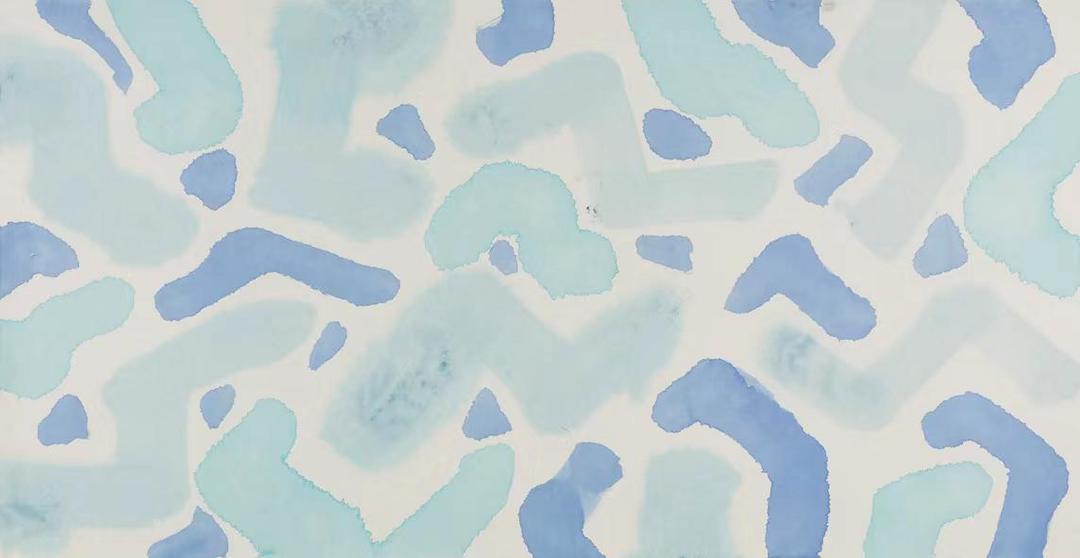
Zhang Qing, "West Lake" series, mixed media on handmade leather paper, 72x140cm, 2021
The Paper: The project description mentions "promoting the standardization of calligraphy and painting paper technology, precise preparation and intelligentization, and high-quality development of preparation techniques through technical means." What aspects are included in "technical means"?
Zhang Qing: One of the highlights of our project is: "Promoting the standardization of calligraphy and painting paper technology, precise preparation and intelligentization, and high-quality development of preparation techniques through technical means." "Technical means" is indeed a major breakthrough in the technological empowerment of our project. .
One is from the perspective of material science and process optimization: our team uses the principles and methods of material science to study the characteristics and selection of raw materials required for paper production, optimize the paper production process, and propose an environmental protection improvement plan for paper production to improve the quality of paper and stability. Including the screening, processing and deployment of fiber materials, the use of additives and the preparation of pulp, etc.
The second is from the perspective of digital design and simulation: our team uses computer-aided design (CAD) and computer simulation technology to digitally design and simulate the paper production process. Through simulation experiments, the structure and properties of the paper are optimized to achieve the desired paper quality.
The third is from the perspective of sensing technology and automation control: our team uses sensing technology, such as sensors for temperature, humidity, and pressure, to monitor key parameters in the paper production process in real time to ensure process stability and consistency. Combined with the automatic control system, the intelligent and automatic management of the paper production process is realized.
Fourth, from the perspective of data analysis and quality control: our team uses data analysis and statistical methods to evaluate and control the quality of paper. By collecting and analyzing data in the production process, identify and solve potential problems, optimize the production process, and improve the quality and consistency of paper.
Fifth, from the perspective of physical testing and testing technology: our team uses physical testing and testing technologies, such as paper quality, thickness, strength, pH, gloss, etc., to conduct comprehensive quality assessment and testing of paper to ensure compliance with relevant standards and requirements.
